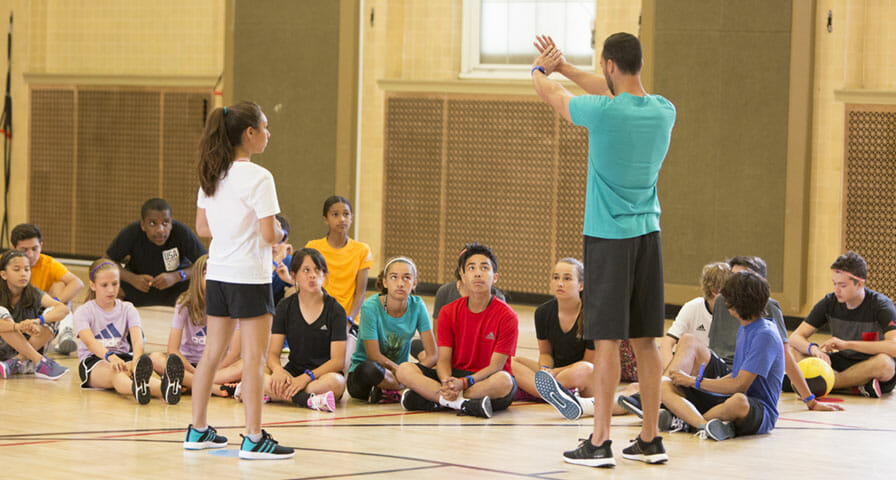Physical education students increase their ability to create heart-healthy workouts utilizing strategies more commonly seen in academic subjects.
In recent years, teachers have implemented practices that give students more control over how they learn essential subject matter. Teachers have found students more engaged and prepared for class when they employ the flipped classroom technique to present material.
In traditional academic classes, teachers typically present new material through a lecture or hands-on lesson and then assign homework to reinforce the lesson after school. The flipped classroom model reverses the way material is presented. What the teacher would normally present in class is assigned for students to study and learn at home, and class-time becomes a forum where students can practice those skills and get help from the teacher as needed.
For physical education, teachers have students plan an engaging workout at home and then execute it during the next class session. Homework helps students understand how to create a quality workout. The teacher then transitions from leader to observer to gauge the success with which students understood the assignment and help implement any corrections or reinforce understanding as needed.
“We make sure that the students have the prior knowledge to be able to create a workout that meets the correct criteria,” said Oskaloosa (Iowa) Middle School teacher Elizabeth Luck. “I give them the goal for the day but allow them to choose how they are going to meet it.”
Luck implemented the strategy for the 2016-17 school year, empowering her students to design workouts that push them to exercise at an elevated heart rate for extended periods of time. She evaluates each workout by observing student participation and offering tips and adjustments as needed.
Students wear IHT Zone wrist heart rate monitors during class and can see with a quick glance to their wrist if they are exercising in the target heart rate zone:
- yellow indicates the student’s heart is working at a moderate to vigorous level;
- red indicates the student’s heart is working at a highly rigorous level;
- blue indicates the student’s heart is not yet working at a moderate to vigorous level
Most of Luck’s goals call for students to exercise with their heart rates in the yellow – optimal — heart rate zone.
“I will write on the board a minimum time that they need to spend in the zone,” she said.
At the end of each class, students return their heart rate monitors and then the Spirit System software delivers an email showing them a summary of the just-completed working, including if they worked hard enough to meet Luck’s daily goal.
The process results in greater student engagement and comprehension of intrinsic skills that will last a lifetime.
“With the use of the heart rate monitors, it helps them understand what it should ‘feel like’ to be in a heart rate zone that helps improve their fitness level,” she said.




